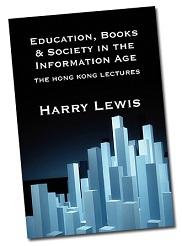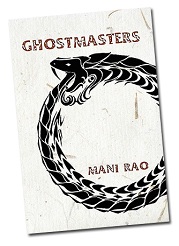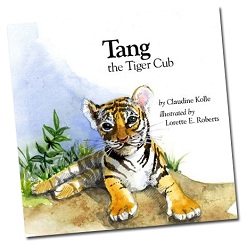|
by Peter Gordon
  
 
Publishing in Asia is a tough row to hoe. That blunt statement needs some qualifying. By "publishing," I mean English-language book publishing, and by "Asia," I mean East Asia. Book printing, magazine publishing, publishing in Chinese and publishing in India are different situations entirely. Asia's English-language publishers are small, and it is hard to identify an Asian-published book that has made much of an impression internationally. It's not that local publishers aren't trying hard enough. Rather, the deck is stacked against them. * * * Book publishing is a daft business at the best of times. Publishers cover the upfront costs of editing, design and layout, manufacturing and then provide the products to sales channels on consignment or "sales or return." Margins are low—the sale channels (booksellers and distributors) take large discounts—a publisher might be fortunate to net 35 cents for each dollar of list price (while it might sometimes be more, it can also well be less). Out of this, the publisher must cover unit costs for printing, royalties, shipping, warehousing, as well as overheads and administration costs. Superficially, local English-language book publishing resembles other Asian manufacturing businesses. Products are designed, manufactured and then shipped to distributors and retailers for sale to end-consumers. But that is where the resemblance ends. Print-runs are tiny, but manufacturers think in terms of shipping containers per product. A 5,000 copy print-run—very large indeed by local standards—would fit into a standard container at least a half-dozen times over: that's if a single customer ever ordered all 5,000 copies at once. Manufacturers' orders, even from small customers, are in the tens of thousands of dollars, if not more. Publishers are often very happy with orders of a few hundred dollars of a single product. And then the customers have the right to decline to pay if, in the end, the products don't sell! If the rest of the consumer goods world—toys, clothes, electronics—worked that way, there would have been no Asian miracle. * * * Of course, if a book sells very well, the marginal costs drop and a publisher can make a return. But Asian markets for English-language books are small and fragmented. While Hong Kong is a city of seven or so million, the English-language market is much smaller: the various ways of estimating this (e.g. looking at the circulation of English-language newspapers, or a raw percentage of the population) yield numbers between 250,000 and 500,000, i.e. the size of a single not-very-large city in America, Britain or Australia. Since 2,000 copies is really the bare minimum for an offset print run at anything approaching reasonable unit costs, that amounts to a market penetration of, say, 0.5%. That may sound like a small and easily achievable percentage, but it would be equivalent—in terms of market penetration—to sales of 1–1.5 million in the United States! In other words, a book must—in most cases—generate mega-blockbuster levels of sales to have any hope of making any sort of a return at all. The wider Asian markets do not in fact offer much additional opportunity. It is the rare book that sells extensively outside of the publisher's home market. Some reasons are straightforward: any book that can generate bestselling sales numbers in competition with the imports is almost always going to have very specific local content, which is what differentiates it from the imported books in the first place. But it is exactly this specificity that makes the book hard to export. Neither is there much shared Asian sensibility: a novel set in Hong Kong might have resonance for Hong Kong readers, but isn't inherently any more appealing to the average Singaporean reader than one set in Los Angeles or London. Distribution within Asia is more pro forma than commercial. Freight between Asian countries is hardly less costly than shipping between America and Asia (in part because the planes leave Asia for the U.S. or Britain full of Asian-made products and return much emptier), and anyway volumes are small. And it is one thing to consign books to a shop down the street, but quite another to consign them across the sea. Asian publishers often can't afford the sorts of terms their larger Western publishers offer. The result is that it is rare to find Hong Kong books in Singapore, the Philippines or Thailand and vice versa. Ironically, it is often easier to make Asian-published books available in the U.S., Britain and Australia than in other Asian countries. Print-on-demand in these countries allows Asian publishers to avoid the need for trans-continental shipping and the cost and inventory risk of overseas warehousing. Availability alone does not necessarily lead to sales, but is nevertheless a sine qua non for any marketing program. This is not to say that no East Asian-published English-language book is ever a commercial success. Everyone can probably point to a few, and we at Chameleon Books have had several ourselves. But there aren't really enough of them to go around nor does it appear there ever will be. * * * Why, therefore, bother? We fortunately have another book business, bookseller Paddyfield.com, that is successful enough that the publishing doesn't need to provide a living wage. We have also learned how not to lose money, even in such decidedly low-volume areas as poetry. This allows us to publish books which we think deserve readers. One doesn't have to wax lyrical about undiscovered masterpieces or diamonds in the rough to realize that is a worthwhile activity. Local markets need some local authors. Authors need to get published in order to refine their craft: that first step on the ladder is often the most important. I have been quoted in the past as saying that local publishing, in Hong Kong at any rate, is very much like Minor League Baseball (or Second Division Football for the non-Americans among you). It is a place where authors can get out and play, polish up their skills—and with luck, be scouted by a team in a bigger league. There is nothing patronizing or to be ashamed of in this: some players go straight from high school to the big leagues; most, however, need some time and experience.[1] This isn't everything, of course. We have also published books of well-known international writers who had work of particularly local or regional interest for which Hong Kong really was the best place for publication. And because we have the skills and facilities, we offer them to others, local NGOs and other organizations in particular, who have material that is best disseminated in book form. * * * Whenever I have been asked when electronically delivered books will supplant traditional books, I answer "In about five years." I have been giving that answer for at least a decade and, like a stopped clock, I may finally have the timing right. Indeed, one of my first reviews for the Asian Review of Books more than ten years ago was on Jason Epstein's Book Business.[2] I asked "Does technology spell boom or doom for the book business in Asia?" Certainly, technology has lowered the cost of printing and distributing books, and these are lowering the prices of international books in Asia ... making locally published books that much more expensive in comparison.
Internet bookstores, whether local or international, put pressure on local booksellers by, in general, providing wider selection at lower prices.
Should e-publishing become a reality—as Epstein argues it will—then the above trends will accelerate.
However, Epstein argues ... that publishing is by nature a sort of cottage industry not well-suited for international entertainment conglomerates. By lowering production and distribution costs—almost to zero in many cases—technology can allow the small guys to make a go of it.
E-publishing, it appears, has at last come of age and is already disrupting of the publishing industry in significant ways. There is a very real possibility, it seems to me, is that the apple cart will be entirely overturned, although not necessarily with the consequences most observers typically imagine. A key question for writers, Asian or otherwise, is whether e-publishing will make it easier to get published. The answer is undoubtedly "yes"—there are no financial or other barriers at all now. But if "getting published" is as easy as getting a Facebook page, it ceases to be a meaningful objective in itself. What matters is whether one is read, and whether a writer can earn enough from writing for it to be a viable vocation. It is, as it has been said, very difficult to make predictions, especially about the future. Nevertheless, given that the technical and financial barriers to e-publishing are so low as to be negligible, one can reasonably assume that the vast majority of e-books will be dross. Even for writers with talent and ability, electronic publishing has not magically eliminated the need for editing, fact-checking and other sorts of quality-control that have until now normally been the purview of publishers. Writers who are unused to the process can be inclined to dismiss the value of professional third-party editing; this almost always has unfortunate consequences. There are of course cases when e-publishing, or self-publishing in general, have allowed a gifted writer to make a complete end-run around the skills built up over decades in the traditional publishing industry, but these are statistical rarities of the once-in-a-blue-moon variety. The problem will be worse than the proliferation of millions of titles of e-rubbish that readers must wade through. The future is highlighted in this Reuters headline from this summer: "Spam clogging Amazon's Kindle self-publishing."[3] While it is true that publishers acted as de facto gate-keepers, a complete lack of gatekeepers is, for most writers, likely to be worse. Imagine "American Idol" without any selection process and no judges. And while e-publishing gives Asian publishers immediate access to a global market, access does itself generate sales: the problem of generating focused attention remains, and has if anything gotten harder as the market gets noisier. * * * What we currently consider a "book," that is 100,000 or so words in a package of a few hundred pages, is itself to some extent a function of the technology used for production and distribution. The cost of producing a book is not linear with its length, so very short books cannot cost much less than books of "normal" length. As a result, short books (novellas, for example) are rarely published and, so, rarely written. Some types of books, such of cookbooks and travel books, have begun to cease to exist as "books" and are being replaced with websites or apps. Business books have often seemed to me considerably longer than they need to be: a good number are extensions of journal arguments that were perfectly valid at a fraction of the length. (This is not the only case where the technological and logistical aspects of "packaging" have affected creative content. For several decades, songs needed to fit on 78 or 45 rpm records, which placed constraints of their duration. Classical songs had a much wider range of lengths than more contemporary songs. All television shows are one of small number of lengths.) We have to come accept that 100,000 words, give or take, is the appropriate unit in which to consume prose. But this was not always the case. There was a time when books were commonly first serialized in newspapers. There have been genres, such as science fiction, where journals of short stories rather than stand-alone novels were prime distribution mechanisms. And should poetry be consumed in units of the several dozen pieces needed to get a book to eighty pages? Or is the natural unit of poetry more like a hundred or so lines at a time? E-publishing has removed the physical and logistical constraints to the unit of text we have called "the book." The lack of physicality may have other effects on the way books are consumed. Books used to bought and kept, or borrowed and returned, sometimes signed, sometimes collected. Books are physically there. E-books, however, may end up being read more like magazines and newspapers: consumed and then set aside. This model for publishing literature exists, of course, in magazines like the New Yorker and journals like Granta and the Paris Review. And, as noted above, for some genres such as science fiction, it was actually a prime mechanism for publication. There are other genres—romance comes to mind—which are consumed very much like journals, i.e. where the reader does not so much select what to read from a catalogue, as reads what is new. It is therefore possible that a considerable amount of writing will move from individually purchased books to something that looks more like a subscription, the economics of which are very different. Contributors to a journal are usually paid a flat fee, rather than a profit or revenue share (which is what royalties are); the publisher's return as a function of sales also changes considerably in a subscription model. The relation of writer to publisher and publisher to reader—and writer to reader—is also different. Twenty-first century technology might bring us back to more nineteenth-century models of publishing. * * * Another development that may have huge effects on publishing from Asia is machine translation, the recent improvement in which has been staggering. There will always be works that defy automatic translation, just as there have always been works that defy human translation. That however is not the question: rather, the question is whether automatic translation will work well enough to have a significant impact on the number of works written in one language that are available, in at least a readable if not perfect form, in another. The number of writers in Asia writing in English is swamped by those writing in Chinese, Japanese, Bahasa and other languages. If even a small percentage of the latter became automatically available in English through the use of translation technology, the landscape for publishers and writers would be irrevocably changed. I'm not willing to bet against this happening. I'd give it five years. * * * Where does this leave writers and publishers? Anyone who claims to have an answer to this question is almost certainly blowing smoke. I don't think anyone has a clear idea of how this will play out, either in Asia or globally. Harvard's Harry Lewis argued at a talk at the Asia Society in Hong Kong in January that certain Asian places, not now known for publishing but with the right sorts of tax structures, might in fact becomes new centres of global e-publishing, as they have in finance.[4] What seems clear is that old model of writers>publishers>distributors>booksellers>readers is likely to be superseded by one that looks more like writers>publishers>readers, or writers>e-sellers>readers or maybe publishers>readers (with writers being on contract), but in any case, one with fewer levels and transformed relationships. This looks like turmoil. In turmoil, there are opportunities. But in turmoil, there is mostly just turmoil.
[1] A former professor of mine has just published Baseball as a Second Language.
[2] Book Business by Jason Epstein, reviewed March 15, 2001, http://www.asianreviewofbooks.com/?ID=1122
[3] Spam clogging Amazon's Kindle self-publishing," Reuters, June 16, 2011, http://www.reuters.com/article/2011/06/16/us-amazon-kindle-spam-idUSTRE75F68620110616
[4] Adapted as "Asia's Idea Economy 2011," Asian Review of Books, May 16, 2011. For the complete article, see http://www.asianreviewofbooks.com/?ID=1198 |